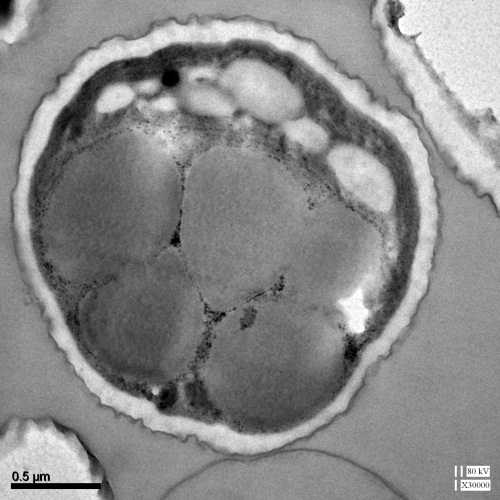Nervonic Acid Makes Commercial Algae Biodiesel Possible
Biodiesel, from feedstock such as microalgae, has received extensive attention in recent years, owing to its biodegradability, renewability, and lack of toxicity. However, technical and economic barriers must be overcome to realize the potential of this energy. In order for microalgae to become an economically viable biofuel feedstock, the cost of producing biodiesel from microalgae needs to be reduced. Identifying a good strain for oil production, which should feature high lipid content, high biomass, and tolerance to extreme environments, remains a challenging prospect. If the strain could produce valuable co-products, such as feed, fertilizers or pharmaceuticals, the economic feasibility of commercialized biofuel production would be improved.
In November this year, Professor LI Fuli, group lead of microbial resources group, and his group from Qingdao Institute of Bioenergy and Bioprocess Technology, Chinese Academy of Sciences made some breakthrough in screening microalgae for biodiesel production. Li’s group analyzed the biomass, lipid content and fatty acid composition of 77 microalgae strains isolated from Shandong province and Beijing, China. A new microalgae strain Mychonastes afer HSO-3-1 that can produce lipids up to 54% of its dry weight has been found. Fatty acid analysis of strain HSO-3-1 by GC-MS indicated the presence of C24:1 (Nervonic acid, 14.7 mg/g of total lipid, >6% of theneutral lipid), which has been shown for biomedical applications.
Nervonic acid is a Very Long-Chain Monoun-saturated Fatty Acid, 24:1, D15 (cis-tetracos-15-enoic acid). It has been identified as an important factor in the biosynthesis of nerve cell myelin and could be used in the treatment of disorders involving demyelination, such as adrenoleukodystrophy and multiple sclerosis where there is a decreased level of nervonic acid in sphingolipids. There are only a few species, most in the Brassicaceae, with high amounts of nervonic acid in their seed oil, butonly Lunaria annua has been examined as a possible niche crop; however, it is a poor-yielding biennial with shattering problems and the seed requires considerable vernalization.
The discovery of C24:1 in M. afer HSO-3-1 expands the variety of natural sources of C24:1, and thus improves the potential value of this microalgae strain in biodiesel production, as it can also be used for pharmaceutical production. This work was supported by the grant from the Chinese Academy of Sciences, and Key Research Program of Shandong Province. The results of this research have been published in Biotechnology for Biofuels.It can be linked from: http://www.biotechnologyforbiofuels.com/content/4/1/47/abstract.
 |
 |
| Fig 1. Transmission electron microscope images ofM. aferHSO-3-1 (by Prof. LI Fuli’s group) | |
Contact: Dr. LI Fuli, lifl@qibebt.ac.cn